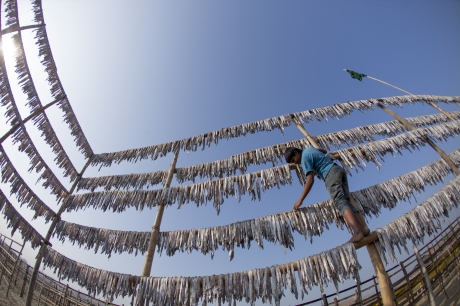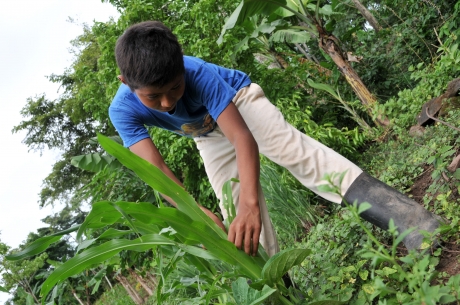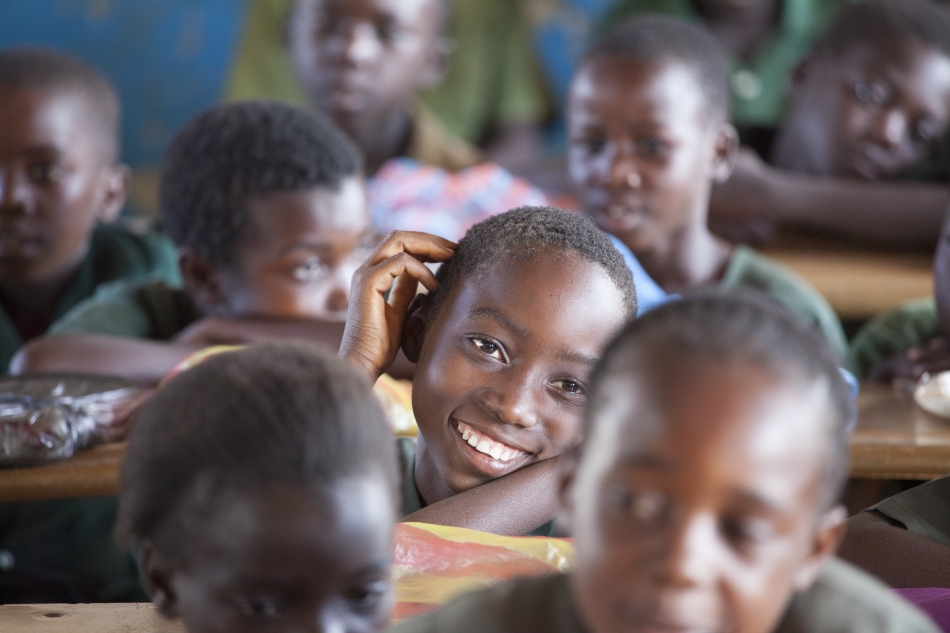/ FAO/ Many of us look back on our childhoods with warm feelings. But for 160 million girls and boys between the ages of 5 and 17 around the world, childhood means something else: poverty, a lack of education and working long hours in dangerous conditions.
Child labour is defined as work that is inappropriate for a child’s age, or more specifically, work that affects a child’s education or is likely to harm their health, safety or morals.
70 percent of all children in child labour work in agriculture (livestock, forestry, fishing or aquaculture). Clearly, this is not an easy problem to erase, but it’s also an issue that we need to tackle to protect the well-being of millions of children.
Children should be free to fully realize their rights to education, leisure and healthy development. This in turn provides the essential foundation for broader social and economic development, poverty eradication and human rights.
But child labour is a complex problem.


Photos: Performing work that is too difficult for a child’s age and ability can result in permanent injury, not only harming the child in the present, but also for the rest of his/her life. Child labour is a global problem that requires a global solution. Awareness and advocacy are the first steps.
Some key factors that contribute to child labour in rural areas are low family incomes, too few livelihood alternatives, poor access to education and limited labour law enforcement. Many families and communities feel that they have no other choice than to employ their children in agriculture in order to keep up with their demands for food and income. In fact, an estimated two-thirds of children in child labour in agriculture work in family operations or alongside family members.
In order to properly address child labour, it is important that we understand that not all work in agriculture carried out by children is considered child labour. Some activities help children to learn valuable farming skills and experience that they can use as adults, to develop socially and to maintain cultural beliefs and practices, all the while contributing to their own survival and food security.
International law takes these situations into account as long as the child’s tasks follow a few important rules. The child must be at least 13 years old (or 12 years old in some developing economies) to help out, and if they do so, it must be for a limited time each week, only in non-hazardous work, and the child must attend school.
Additionally, once a child has reached the legal minimum age for work, which is generally 14 or 15 years of age, she or he is allowed to work, but still not in any situation considered hazardous.
For too many children, work in agriculture goes beyond the limits for safety and well-being, and crosses the line into child labour.
Children in child labour face a variety of negative consequences that stem from work that is too difficult or too much for their age and capability. Physical disability, mental or emotional trauma, along with a lack of education, can put these children at a huge disadvantage for the future. Their options to move on to other livelihoods are diminished because they did not have access to the resources they needed to have a safe, healthy and balanced childhood.

©FAO/Ivan Grifi
Child labour not only continues the cycle of poverty for the children involved, but also for their families and communities. Without education, these girls and boys are likely to remain poor, perpetuating their state of poverty and ultimately undermining efforts to reach sustainable food security and end hunger.
As part of its wider approach to eliminate child labour in agriculture, FAO promotes efforts to boost the incomes of rural families so that they have the means to send their children to school rather than work. FAO and its partners also help to develop the overall capacities of government and agricultural ministries so that they are better equipped to deal with the complex nature of child labour.
Promoting and enforcing global action against child labour is the only way to protect the world’s children, and through them, our shared future.
Source & Credit: FAO Story


Comments